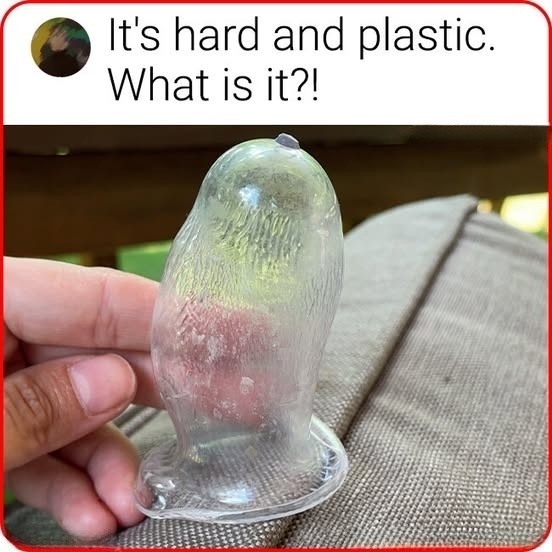Imagine this—you pull an oddly shaped, hard plastic object from your dishwasher, and it looks like something straight out of a sci-fi movie. It’s transparent, deformed, and has a strange texture. What could it be?

This exact scenario has left many people puzzled, sparking countless internet debates and wild guesses. Some thought it was a mysterious artifact, while others suspected it was some kind of toy. But the real answer?
It used to be a drinking cup or an insert that melted in the dishwasher!
Yes, that strange-looking object was once a perfectly normal cup before the heat of the dishwasher transformed it into an unrecognizable blob. But how does this happen? Let’s break it down.
How Does a Plastic Cup Melt in the Dishwasher?
The Science Behind Plastic Melting
Most plastic cups and containers are made from thermoplastic materials, which means they soften and deform when exposed to high temperatures. Dishwashers, especially those with heated drying cycles, can reach temperatures over 150°F (65°C)—enough to warp or even completely melt certain types of plastic.
Here’s what happens:
- Heat Exposure: If a plastic item isn’t dishwasher-safe, the extreme heat from the drying cycle softens it.
- Shape Distortion: As the plastic softens, the force of water jets and surrounding items can press against it, causing it to deform.
- Cooling Down: Once the cycle ends, the plastic hardens again—but now in its newly warped shape.
And voilà! Your once-functional cup is now a strange, ghostly-looking object that seems to defy explanation.
Why Do Some Plastics Melt and Others Don’t?
Understanding Plastic Types
Not all plastics react the same way to heat. Some are heat-resistant, while others can’t handle high temperatures. Here’s a quick breakdown of common plastic types:
- Polyethylene Terephthalate (PETE or PET): Found in soda bottles and food containers, PET can warp at high heat but doesn’t fully melt.
- High-Density Polyethylene (HDPE): More heat-resistant but still deformable at extreme temperatures.
- Polypropylene (PP): This is the safest for dishwashers, often used for microwave-safe containers and durable plasticware.
- Polystyrene (PS) & Low-Quality Plastics: These are the most likely to melt and warp, commonly found in cheap plastic cups and utensils.
So, if your plastic cup wasn’t labeled “dishwasher-safe,” it likely couldn’t handle the heat and ended up looking like an abstract sculpture.
Can You Prevent Plastic from Melting in the Dishwasher?
Tips to Keep Your Plastic Safe
If you don’t want your favorite plastic cups or containers to turn into melted blobs, follow these simple tips:
- Check for Dishwasher-Safe Labels: Always look for the “dishwasher-safe” symbol on plastic products before putting them in.
- Use the Top Rack: The top rack of the dishwasher is farther from the heating element, reducing direct exposure to extreme heat.
- Turn Off the Heated Dry Cycle: If possible, use air-dry settings instead of heat-drying.
- Hand Wash Delicate Plastics: If you’re unsure whether an item can withstand the dishwasher, hand wash it instead.
Following these precautions can save your plasticware from an unwanted meltdown.
What to Do If Your Plastic Has Already Melted

Can You Still Use a Melted Plastic Cup?
Once plastic has melted and reshaped, it’s no longer safe to use for drinking or eating. The heat can alter the material’s chemical composition, potentially releasing harmful substances like BPA (if present in the plastic).
Here’s what you can do instead:
- Repurpose It: Use it as a quirky decoration, pen holder, or art project material.
- Recycle It: If the plastic is recyclable, dispose of it properly.
- Dispose of It Safely: If you’re unsure, throw it away instead of risking potential chemical exposure.
Final Thoughts: The Mystery of the Melted Plastic Cup Solved
At first glance, the melted plastic object in the viral image seemed like an unsolvable riddle. But in reality, it was just another victim of a dishwasher gone wrong.
This odd transformation serves as a fun reminder of how heat affects materials in unexpected ways. So, the next time you load your dishwasher, check those plastic labels—unless you’re hoping to create your own melted masterpiece!


